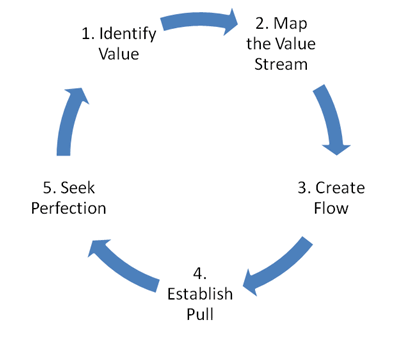Explaining a powerful concept through a simple analogy
LEAN is a powerful methodology that allows teams to deliver value to customers while minimizing waste. But what does LEAN really mean? What are its principles and core concepts? I illustrate using a simple analogy.
 Photo by Joanna Kosinska on Unsplash
Photo by Joanna Kosinska on Unsplash
Imagine we?re asked to prepare tea.
Making a cup of tea for yourself is simple enough. Making tea for 10 guests is slightly more involved. If one of these guests offers to help you, it?ll reduce the time taken but also it?ll also need more coordination.
Now, imagine if you had to make tea for 500 guests! It gets still more complicated. You?d have to plan on a larger scale. You?d have to coordinate delivery of supplies, hire servers, and ? worse still ? figure out how many people you need to serve and what kind of tea they like.
The more things we need to coordinate, the more chances we have of breakdowns. When processes get more complicated, inefficiencies creep in. Inefficiencies waste time, which in turn waste money, which in turn reduces profits and customer satisfaction.
lean (l?n): thin, especially healthily so; having no superfluous fat.
From a process perspective, inefficiency is ?superfluous fat?. When a process consists of just one person doing one activity with all the required resources, things are simple. When we add steps and people into it, things become more complicated. Efficient processes co-ordinate various resources, in the best possible sequence, to deliver a product or service. Inefficient processes are bloated with wasteful operating practices. That waste builds up over time. LEAN helps us remove these inefficiencies from a process.
(Brief) History
LEAN traces its origins back to the early days of automobile manufacturing and postwar Japan. During that time manufacturing, which relied solely on economies of scale, produced a lot of waste. That was either obvious waste ? imagine heaps of scrap metal ? or hidden waste, like holding high levels of inventory items. These costs could be potentially absorbed by larger manufacturers. For a Japanese economy just starting to rise from World War 2, resources were scarce. They could not afford waste.
It was against this backdrop that Taichii Ohno, along with other engineers at Toyota, began introducing new techniques designed to improve productivity, while maintaining quality. LEAN manufacturing techniques began systematically identifying and reducing wasteful operating practices. The engineers at Toyota took a good look at the current manufacturing practices and re-designed them to achieve a fundamental shift in thinking: from the utilization of machines, to flow of product through the total process.
Ohno is considered the father of the Toyota Production System, which achieved considerable and sustainable manufacturing success and became the precursor of LEAN manufacturing: a set of principles designed to add value by removing things that don?t add value.
Lean Concepts
Today LEAN has moved beyond its manufacturing origins and finds broad application across all types of industries, including service-oriented ones.
LEAN techniques help manufacturers and service-providers achieve the ideal outcome ? delivering what customers want when they want it ? while still keeping costs low, and having high flexibility and quality and fast turnaround times. More than a set of techniques, LEAN is a mindset of continuous improvement in the pursuit of perfection.
There are five principles of LEAN:
- Specify value from the standpoint of the customer
- Map the Value Chain or Value Stream
- Create flow
- Let customers pull value from upstream processes
- Seek Perfection
 Source: LEAN Enterprise Institute
Source: LEAN Enterprise Institute
Following from the principles, LEAN centres on 4 inter-related concepts: ?flow?, ?pull?, ?value? and perfection. Earlier we talked about making tea. I?ll use a related analogy of a hot water tap to illustrate these concepts.
Flow
LEAN is all about flow. In the optimum flow, work progresses across a process smoothly and swiftly. In manufacturing, this is not always easy, since different raw materials are processed by various machines, people and processes.
Taps are also about flow. In our case, hot water flows through a tap, at a set rate, at our command. When the tap is working, all is well. People barely notice its existence. However, consider the following scenarios:
- Dribs and drabs ? sometimes, at the start of the day ? or perhaps during lunchtimes when the burden on the system is highest ? flow is interrupted.
- Long time for hot water to come ? which can, among other things, be a consequence of plumbing design. This is often seen in homes where one geyser supplies the entire house. When hot water has to travel through longer pipes twisting all the way around a building, then it?ll take longer time to arrive at the tap.
The above are symptoms of the three classic enemies of LEAN: Waste (Muda), Overburden (Muri) and Unevenness (Mura).
We have often heard the mnemonic TIMWOOD, which talks about the classic wastes in processes. However, we don?t hear that much about ?burden? (and overburden) or ?variation? (and unevenness), which I feel is equally important to be aware of.
Maximizing flow is about ensuring that the process is efficient and effective. The flow of material ? or any other work item ? through the process must be smooth and swift. Waste, variation, and overburden impede flow.
This is similar to a common plumbing situation: If we have a pipe which is uneven or is clogged, water will not flow smoothly through it. Blocked pipes are literally enough to give people heart attacks: when our arteries (pipes) are clogged with cholesterol, this impacts blood pressure (flow) resulting in heart disease.
It is easy to see how these wastes hinder productivity.
TIMWOOD is a standard acronym used to represent wastes relating to unnecessary or avoidable Transportation, Inventory, Movement, Waiting, Over-processing, Over-production and Defects.
The classic image of the dysfunctional factory comes to mind: piles of inventory, teams waiting idly to receive input from other teams, a huge scrap heap, poor quality outputs, and so on. Waste can also exist in service environments. The symptoms remain the same, only now instead of a product (like a wheel assembly), it is a service (such as invoice processing) where waste accumulates. Reducing waste is at the heart of LEAN. Reducing waste helps to improve flow.
Pull
Another concept central to LEAN is that of pull.
?Pull? is a supply chain management technique. The principle is to take action when the receiving customer (or process) signals a demand or orders it. By re-stocking only when we actually need to, we minimize overproduction and over-ordering.
Taps are about Pull, too. When we turn on a tap, we get water. We get it on command, and at a rate that we can control by adjusting the tap. This is Pull at its purest ? literally.
Nowadays, we have sensor-activated taps which take waste-reducing to a new level. They are activated by sensors, and only dispense a certain amount of water. That means less water wastage and it also removes the unnecessary task of turning the tap on and off.
Conceptually speaking, sensor-based systems usually operate on a pull basis. Take traffic-lights. Contrast the types that phase at regular intervals, regardless of traffic build-up, with ones that dynamically adjust their phasing based on traffic-detectors, A traffic-light that can detect that the road is empty and reduce the red-light time accordingly is more efficient for everyone.
The more flexibility there is to cope with demand, the smoother the overall flow. Once again, we come back to the concept of flow.
Why is flow so important? Flow is an integral contributor to the ultimate goal of LEAN ? to deliver value to the customer.
The story of LEAN reaches its climax when we talk about Value.
Value
What is value? Value is what the customer is willing to pay for. It is the utility a product or service provides. Value is where all the concepts of LEAN come together.
When we open the tap and it dispenses hot water immediately, safely, and to the quantity we specify, we receive the item of value (hot water in this case). If the flow is not smooth or fast, then the optimum value is not being delivered.
Value is specified by the customer. The series of activities that help create a product or service that a customer has value for, is called a Value Chain.
If we work our way back from the dispensing of ?value? (hot water), we see a tap, sitting in front of a system of pipes and thermostats that trace back to a water supply source, and, ultimately, a water body. Factor in the various suppliers, manufacturers, inter-operable parts, quality standards, etc. and we start to truly envisage what a massively coordinated effort it is to provide a hot water system ? something we take as basic everyday essential.
LEAN requires holistic thinking: we need to know the full picture. When we know the full picture, we can track root causes better, understand value better, diagnose better and therefore design better.
When we turn on the tap, we?re basically making use of a value chain that dispenses hot water (value) to us upon demand. If the hot water is dispensed smoothly and swiftly, it means the flow across the process is efficient and effective. If not, then we have to ask questions. We use LEAN tools to help us investigate and improve.
LEAN is a powerful tool-set which has resulted in tangible and significant process improvements across manufacturing and service industries. To appreciate the real value of LEAN, we must see beyond its immediate appeal as a tool-set.
Perfection
LEAN thinking is a mindset of continually striving towards perfection. Process improvement is not a one-off effort. There always remains room for further improvement. Moreover, waste, variation, and overburden eventually creep back into any process. By continuously removing these causes of poor quality, the LEAN mindset strives, endlessly, to create the perfect process. So that the best possible product or service can be delivered to the customer.
Going back to our hot water tap, this step means continually improving the device to account for modern technologies, sensitivities, tastes, aesthetics, and quality ? and any other aspect that the customer values.
When the concepts of LEAN are interwoven into this discipline of continuous improvement, its true power starts to be unleashed.
Ultimately, LEAN is about elegance.
It is about creating a system (value chain) that can provide an elegant solution (value) to the end customer while expending optimal effort (flow).
For designers, elegance = empathy.For engineers, elegance = efficiency.We need both. ? John Maeda (Designer, Technologist)
The hot water tap is the ideal contraption. It has a universally understood interface ? on/off ? with progressive stages in between. It is an elegant solution for dispensing water in controlled quantities, on demand, and to a required temperature. When we view it as a system, it is inter-operable and largely standardized in terms of concepts, vocabulary, and materials.
The next time you brew your tea bag in 250 ml of ?freshly boiled water?, take a few minutes to marvel at the process. Water, originating in a water body somewhere unknown, is coming to a tap near you. Boiling hot, within seconds of pressing a button, and at a uniform flow.
Just like making the perfect cuppa, LEAN is about maximizing the moment and continually inching towards perfection.


